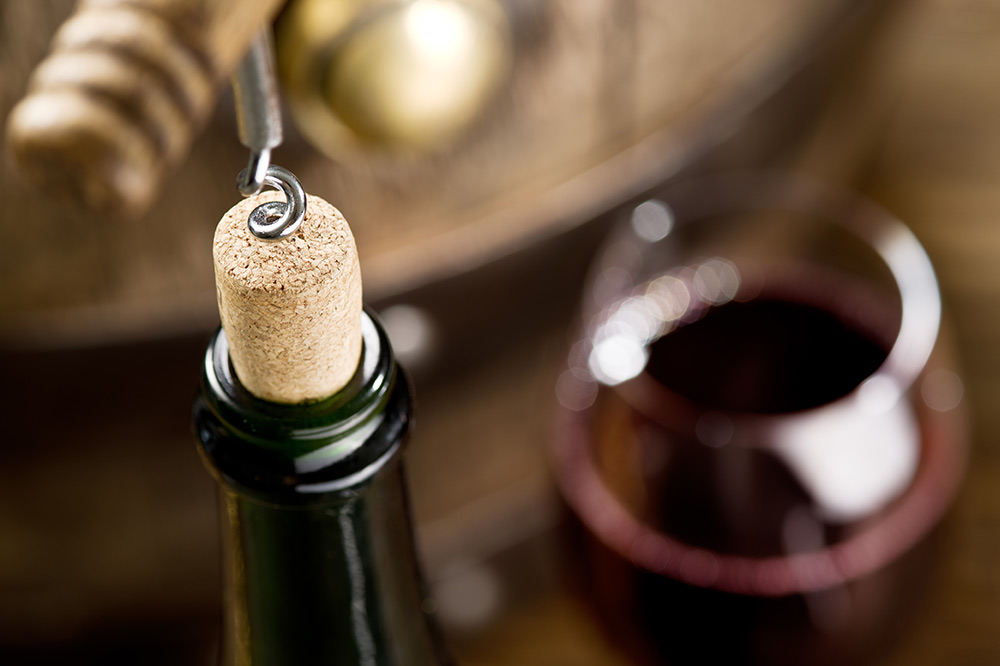While it can be fun to peruse a restaurant’s wine list for new discoveries, from time to time you might have a specific wine in mind to go with your meal. Or maybe it’s a special occasion and you want to celebrate at particular restaurant with a bottle you’ve been saving for just the right time. In these cases, you might want to bring your own (BYO) wine to the restaurant, also known as corkage.
Some cities have a thriving BYO culture such as Philadelphia, where strict licensing procedures and a high tax on alcohol has prompted many restaurants to let customers bring their own wine. In other areas, such as San Francisco, proximity to local wineries encourages restaurants to be more open to BYO due to popular demand.
Even if BYO isn’t the norm, many restaurants will allow customers to bring a personal bottle, usually for a fee to cover the cost of opening and serving your wine. Depending on the restaurant, corkage fees can be as little as $10 or upwards of $50 or more, though $20-$35 seems to be the median range. In cities that embrace BYO, some restaurants will even have corkage free days. Whether you’re a BYO regular or new to the term, below are a few considerations to keep in mind about corkage for both customers and restaurants.
BYO Considerations for Customers
Call the restaurant ahead of time to find out their BYO policy. This is not only considerate, but it also gives the restaurant a heads up if you’ll need special glassware or plan to bring several bottles. This is also a good time to find out how much the corkage fee is and if there are any stipulations, such as a bottle limit or not bringing a wine that’s already on the restaurant’s list. You might also learn that BYO is not legally permitted in that state, such as Delaware, Ohio, or Wisconsin, in which case your call will have saved you from bringing the bottle, only to find you can’t legally enjoy it.
Offer your server, sommelier, or beverage director a taste of your wine. Presumably, you’ve brought a bottle that is both special and not on the restaurant’s list, so they’ll likely be interested to know how it tastes. They’ll be appreciative of the nod to their profession and they might discover something they love!
Don’t be cheap with the bottle you bring! It’s disrespectful to both the restaurant and the professionals who work there, implying that they don’t know how to do their job and that you don’t know how to appreciate their work. Depending on the restaurant’s corkage fee, bringing a cheap bottle won’t necessarily save you much in the end. A good rule of thumb is to never bring a bottle that costs less than the least expensive bottle on a restaurant’s wine list.
Don’t argue about the amount of the corkage fee. It’s true that some restaurants purposely charge an exorbitant fee to discourage customers from bringing their own bottle, but it’s at the restaurant’s discretion to allow BYO or not. Restaurants are also considering their investment of time, effort, and money into putting together a great wine list that complements their menu.

BYO Considerations for Restaurants
Don’t make a customer feel guilty for bringing their own wine. It sets a bad tone for the customer’s meal and could ultimately reflect poorly on the restaurant. While honoring the customer’s request, also consider highlighting interesting bottles on the wine list that may have been overlooked.
Closely consider your beverage mark-ups, and whether your wine list is offering something customers wouldn’t normally find in a store. If customers consistently see high mark-ups on average, mass-produced bottles as if they are hard wines to come by, don’t be surprised if more customers bring their own bottles.
Make sure your staff knows your restaurant’s corkage policy and can explain it to customers. If questions about corkage don’t arise very often, it’s certainly understandable that your staff may need to seek clarification. At a minimum, they should be aware of the concept and whether or not your restaurant will allow BYO.
Protect your tips. Remind your servers that it’s not enough to just be OK with a customer bringing their own wine. They need to be as attentive about catering to that situation as any other. Customers may perceive that their level of service is decreased if they have to repeatedly ask for a corkscrew or extra glasses or a bucket of ice. And if they feel like the service is less than normal, the amount of tipping will surely follow.






